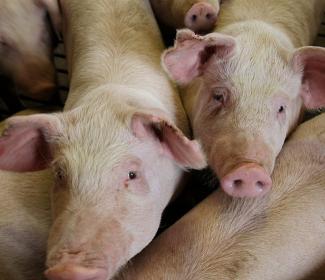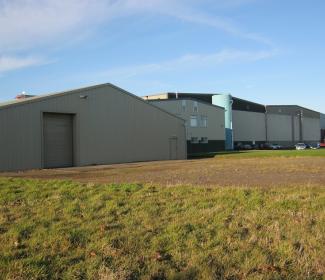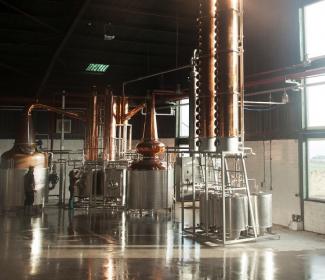Aquaponics in Western-Pomerania, Germany
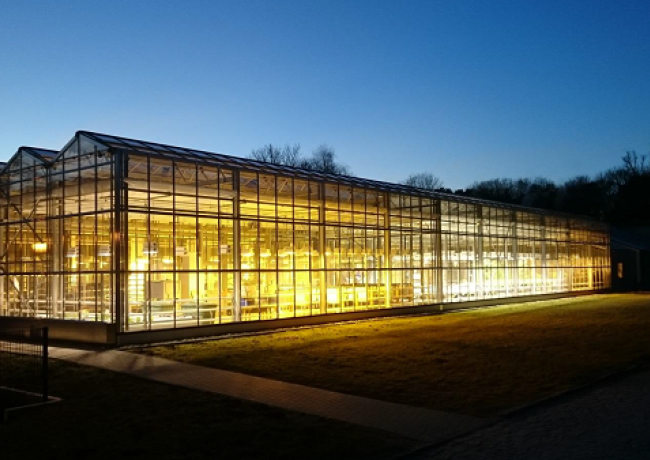
Contact details: Prof. H.W. Palm
Department of Aquaculture & Sea-Ranching
Faculty of Agricultural and Environmental Sciences (AUF)
University of Rostock (Germany)
Email: harry.palm@uni-rostock.de
Tel.: +49 (0) 381 498 3730
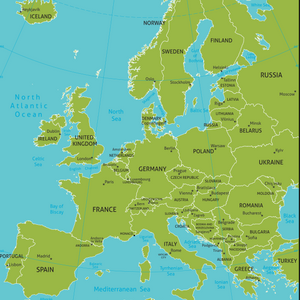
Location
What are the aims of the project?
This project aims to build upon the results of the successful FishGlassHouse project. The FishGlassHouse is a modern state-of-the art aquaponic facility at the University of Rostock.
Aquaponics combines aquaculture (fish production) and hydroponics (soilless plant cultivation). In aquaponics, the nutrients for plant growth originate directly from fish feed that is digested by the fish and converted by bacteria to soluble nutrients for the plants.
This project aims to increase the quality of the fish and plant products produced at the FishGlassHouse. It also aims to create a new sustainable supply chain, based on the ecological friendly aquaponics, for regional farmers, gardeners and food processors in order to meet needs of the local market in Western-Pomerania (Germany), where the products will be sold.
How will your project achieve these aims?
We are going to vary the feed ingredients (for example proteins, lipids, minerals in the fish feed) in order to improve the quality of the fish produced. We are testing possibilities to increase the quantity of the n-3 essential fatty acids as well as the amount of certain minerals inside the fish fillets.
At the same time we intend to improve the nutrient composition of the recirculating water (process water from the aquaponic system) in order to support plant growth. Additional fertilizers, if needed, are reduced to a minimum.
Who is taking part in the project?
Professor Palm and Dr. Knaus from University of Rostock in Germany are cooperating with Fischgut Nord eG (cooperative involved in African catfish production and fish processing in the region), Grönfingers GmbH (garden centre) and F&F Fisch und Feinkost Handelsgesellschaft mbH (fish marketing company).
How is the project funded?
European Agricultural Fund for Rural Development (ELER) and national funding (Ministry of Agriculture, Environment and Consumer Protection of Mecklenburg Western Pomerania, MV, Germany).
Where did you go for help and advice?
We are members of the EU-Aquaponics HUB, which is a European Union (EU) wide aquaponic working group consisting of recognized scientists. EU-Aquaponics HUB has been really helpful for exchanging ideas and information.
We also use our contacts with various internationally recognised scientists in the field of aquaculture and aquaponic companies.
What is your greatest achievement so far?
Constructing the 'FishGlassHouse'. Having an experimental research facility with ca. 1000 m² total production area has been invaluable for the project.
The greatest achievement so far of the project itself is the fact that we are already producing four tons of catfish per year for the local market in Western-Pomerania using the aquaponic principle. We have managed to reach the commercial quality standards and reduce the ecological impact of the production.
We were able to produce herbs and ornamental plants without using any additional fertiliser. Accompanied by ongoing research activities on fish welfare aspects and fish as well as plant growth potential, we constantly adjust our production system to meet the challenges of the future.
We are making progress to adapt the utilised feed in order to reach the required quality of the plants.
And the biggest challenge so far?
Developing and building the 'FishGlassHouse' was very challenging. At the moment our biggest challenge is finding the optimal conditions for the best fish and plant quality.
How are you sharing the knowledge gained?
We have produced short movies about our project. We hold information events and publish in the international literature. We contribute to the EU Aquaponic HUB and use the FishGlassHouse as a training centre for national and international students. We welcome many visitors all around the year. We also work with local companies to support them benefitting from the aquaponic production principles.
Any tips for others thinking of doing something similar?
We would recommend starting with small-aquaponic systems and consulting experts in the field of plant cultivation and fish farming to help you finding the optimal design for your own system. Once the small-scale system is running you can expand your production.
Keep in contact with the international research community. New data has demonstrated that the optimum production in terms of fish and plant yields (biomass development) depends on local environmental factors such as light and temperature. For an economically sustainable production, fish and plant species specially adapted to these factors must be used, and possibly changed throughout the year depending on conditions.
Not every fish species produces the same crop yield (biomass) and that not every fish species has the same growth potential. An optimal aquaponic system requires the use of different fish species in order to reach optimal plant growth. If several species of fish and plants are kept at the same time within an aquaponic system, this form of cultivation is called POLYPONIKS (aquaponics + polyculture).
Joining international bodies such as the EU-Aquaponics HUB and EIP-AGRI operational groups are great for sharing ideas and exchanging knowledge and advice.
You can find out more about the project in this short English-language video:
Fishglasshouse from ScottishRuralNetwork on Vimeo.
- Log in to post comments
